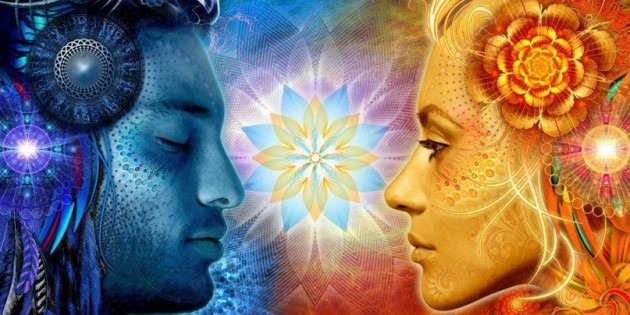Brahmacharya
Brahmacharya means to follow Brahman. To seek supreme reality, self, and god. In this aspect, Brahmacharya is inherently Hindu. It also represents fidelity when married, simple living, and celibacy when unmarried. Brahmacharya is also taken more seriously by many ascetics, including being complete celibate and emphasizing chastity for obtaining moksha.
However, Brahmacharya is a concept that exists in Jainism, Buddhism, and Hinduism for monastic life that includes complete celibacy and no marriage.
Brahman is the universal spirit of Hinduism, the “divinity” that is at the core of each being, but also represents absolute reality and the universal-self.
Charya is a word that means following conduct, following, engaging, and is usually translated as virtuous.
Together, these words form the concept of following dharma towards moksha, or liberation. This concepts form the 4th Yama in the Hindu tradition and one of Mahavira’s eight teachings. It is a concept that follows alongside dharma, providing guidelines to act upon.
Okay, so let’s adapt this concept to modern life. If you are acting in a divine way, you aren’t doing anything that doesn’t feel great to you, this can include whatever you want it to include. You avoid pain and suffering. Other people’s judgement of the lifestyle that you choose is irrelevant to your own happiness, so forget about what people think about how you live. You can do whatever you want or need to do to make yourself happy, as long as it doesn’t intrude upon the divinity of other people. Understanding that each being is divine and contains this magic spark of life and that they are free to express that in whatever that being chooses to is important to being able to express your divinity.
Obviously this can apply to a wide variety of things. Suburbs made of concrete and tar do not respect the divinity of the land they are on. The trees around the developments have to be implemented and instead of cultivating and terraforming in congruence with the growth of the land, it is chopped away and replaced and completely controlled. We are not respecting the divine nature of the self-sustaining natural ecosystem by replacing it with our structures and squares that aren’t made in conjunction with prosperity for the land that it is on.
It also applies to relationships. How often do you feel great after a one night stand? What kind of bonds do you want with the romances in your life? How is it that we always remember our freaking roommates?!? How can you possibly be happy living with another person? I think a lot of relationship things come down to compatibility. Can the two people stand each other while they change over time? Do they explore together, or drive around in circles separately? What do they want out of life? What are their values, or what do they consider important? All of these things have to be compatible, not necessarily the same. When you find someone who has values, habits, beliefs, etc. that are compatible with your own, you can feel a sense of overwhelming calm, as if it was meant to be. Sometimes you can forget what it was like before you knew that person. I think this is all a side-effect of the human condition, of our own divinity, if you will.
But anyways, what does that mean, compatibility? Hell if I know, but I think it means that you don’t over-react to each other, that you live in somewhat similar circumstances. Tolerance is key, but honestly, it sucks. Shared passions I think make the greatest compatibility.
Find someone else that is compatible really comes down to the search. How you go about looking for love. Friends can become great lovers. So can expedited friendships that immediately turn into relationships. No need to rush things, everyone is already thinking about sex way too much in this country. People tend to find each other when they are following their passions. A lot of times, this is at work. I think that understanding that the other being is divine is key to the core respect of the relationship, or at least understanding that they are the same as you in so many ways. Even if you don’t use the word divine, instead maybe “hypercomplex”, “ultrasmart”, “understanding”, etc. I think divine is a great word to describe human capacity and potential. It is the only word that really encapsulates the tremendous power of it all, of human existence.
After all, we are closer to the size of mountains than the size of atoms. We are not insignificant cosmically, especially the complex molecules of our bodies regulatory systems. Whether you believe in divinity, or nothing, I believe we are talking about the same thing.
You see, to believe there is nothing is to deny the sense and all prior experience. To believe in something is order with the way of the cosmos. So if we make the assumption that the cosmos is, then the next question, inevitably, is what is the source of the cosmos. The only possible answer to this, is the cosmos itself. So the universe is its own source. To believe that a god created this source is to lack accounting for the source of god. So Hindus believe that Brahmacharya is to act in accordance with the universal laws of dharma, or the universe. Celibacy is definitely not necessary to truly be immersed in Brahmacharya.

